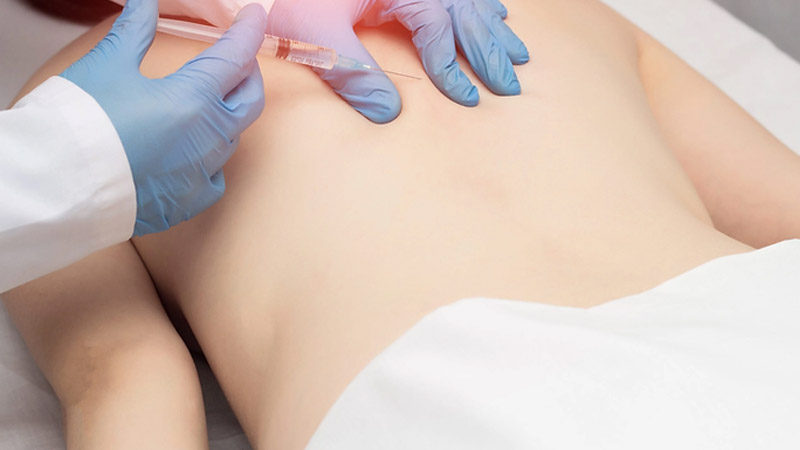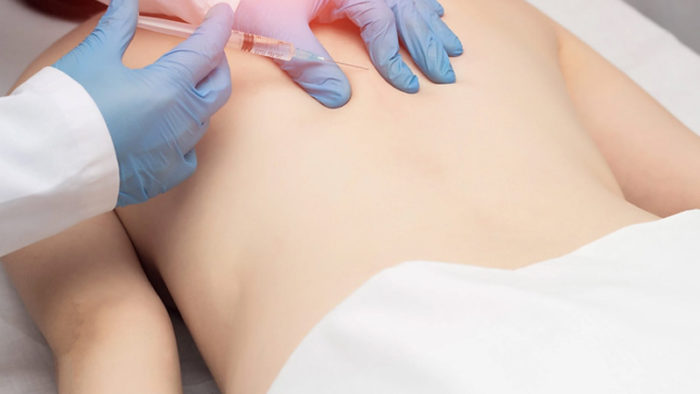This particular gel, Hydrafil™, was tested in humans for the first time and was proven safe and effective in relieving chronic low back pain. Degenerative disc disease is the leading cause of chronic low back pain, which is one of the world’s most common medical conditions.
Healthy discs cushion the spine’s vertebrae, facilitating movement and flexibility. With normal aging, however, they can become dry, thin, cracked, or torn, causing pain or loss of motion. By age 60, most people have at least some disc degeneration.
Hydrogels have been used for a number of years to treat DDD, but the current study is the first test of this particular gel in humans. The gel used in this study is a second-generation hydrogel developed by ReGelTec, Inc., and it received FDA’s breakthrough device designation in 2020, which allows an expedited review when early evidence suggests an experimental product may provide more effective treatment than current options for treating a serious condition.
The research team enrolled 20 patients, aged 22 to 69, with chronic DDD low back pain. Each described their pain as four or higher on a 10-point scale. None had found more than mild relief from conservative care, which includes rest, analgesics, physical therapy, and back braces.
Patients were sedated for the procedure, and the gel was heated to become a thick liquid. Guided by fluoroscopic imaging, researchers used a 17-gauge needle to inject the gel directly into the affected discs, where the gel-filled in cracks and tears, adhering to the disc’s center and outer layer.
After six months, all participants in this small study reported significantly less low back pain—declining from an average self-reported pain level of 7.1 down to 2.0 on a scale of zero to 10. They also experienced greatly improved physical function, with average scores falling from 48 to 6 on a questionnaire to gauge the impact of low back pain in preventing patients from the ability to perform normal activities.
“If these findings are confirmed in further research, this procedure may be a very promising treatment for chronic low back pain in those who’ve found insufficient relief from conservative care,” said lead author Douglas P. Beall, MD, FSIR, chief of radiology services at Clinical Radiology of Oklahoma. “The gel is easy to administer, requires no open surgery, and is an easy procedure for the patient.”
“We really have no good treatments for degenerative disc disease, aside from conservative care,” said Dr. Beall. “Surgery is statistically no more effective than conservative care and can potentially make things worse; nerve ablation is appropriate for only a few patients, and existing hydrogels are inserted through an incision as a soft solid, which can pop out of place if you’re not highly skilled in placing it.”
“Because this gel is injectable, it requires no incision, and it augments the whole disc, restoring its structural integrity, which nothing we have currently can do,” he said. The results of this study are particularly significant because current treatments for DDD, such as surgery or nerve ablation, are not effective for most patients. In addition, existing hydrogels can be difficult to insert and may not provide adequate relief.
The study is still in its early stages, and further research is needed to confirm the safety and effectiveness of this hydrogel. Dr. Beall noted that the hydrogel used in this study has several advantages over other treatment options for degenerative disc disease. One advantage is that the gel is liquid when heated, allowing it to flow easily into the disc space without the need for an incision. This makes the procedure less invasive and reduces the risk of complications.
Another advantage is that the gel adheres to the disc’s center and outer layer, filling in cracks and tears and restoring the disc’s structural integrity. This is important because it allows the disc to function as it should, providing cushioning and support to the spine.
Dr. Beall and his team plan to continue studying the safety and efficacy of this hydrogel in larger clinical trials. If the results of these studies are positive, it could become a widely used treatment option for patients with degenerative disc disease.
One limitation of this study is that it was a small trial with only 20 participants. Larger studies are needed to confirm the safety and efficacy of this treatment. Additionally, the study only followed patients for six months, so it is not clear how long the effects of the hydrogel will last.
Despite these limitations, the results of this study are promising and offer hope for patients with chronic low back pain caused by degenerative disc disease. For many people with this condition, conservative care options such as rest and physical therapy are not enough to provide relief. Surgery is also not always effective and can carry significant risks.
The development of this hydrogel offers a new option for patients who have not found relief from other treatments. It is a minimally invasive procedure that can be performed in an outpatient setting, and early results suggest that it is safe and effective
If further studies confirm the safety and efficacy of this treatment, it could become a widely used option for patients with degenerative disc disease. For the millions of people around the world who suffer from chronic low back pain, this offers new hope for relief and improved quality of life.


